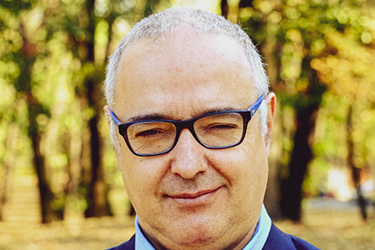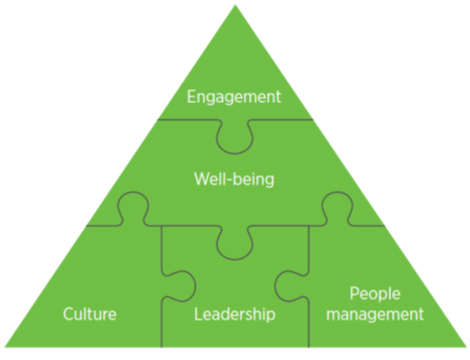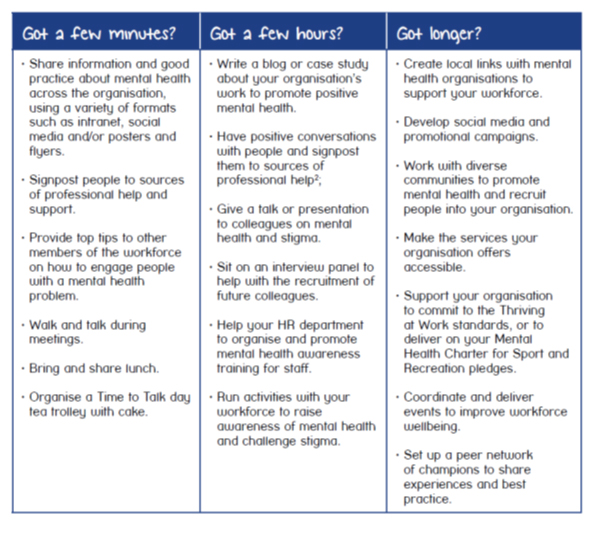Leaders' Effect On Followers' Mental Health
By Zoran Pavlovic

Good mental health (MH) and psychological well-being are fundamental human concerns in determining human happiness and flourishing, both in private and working life. One of the most comprehensive and commonly accepted definitions of mental health is provided by the World Health Organization (WHO): "mental health is a state of well-being in which every individual realizes his or her potential, can cope with the normal stresses of life, can work productively and fruitfully, and can make a contribution to her or his community." International Labor Organization (ILO) defines workplace well-being as "all aspects of working life, from the quality and safety of the physical environment, to how workers feel about their work, their working environment, the climate at work and work organization" and consider it as a critical factor in determining an organization's long-term sustainability and effectiveness.
Positive mental health can be defined as complete psychological functioning: the ability and capacity to flourish, a positive sense of well-being, and the ability to cope with normal or stressful life situations (e.g., ability to love and work, efficient problem solving, and self-efficacy). The etiology of both negative and positive mental health is multifactorial and includes a wide array of social, psychological, and biological factors ranging from life events, chronic exposure to adverse social circumstances, the quality of working and living environments, poor coping skills, low self-esteem, poor nutrition, physical trauma, to physiological or genetic factors.
Correlation of Employee MH (EMH) with business outcomes
The main benefits of having mentally healthy, happy, and satisfied employees translate into higher engagement and productivity, higher morale, increased psychological resilience, better life-work balance, lower presenteeism, absenteeism, and turnover intention.
Mental Health in the Workplace
Mental health has become one of the significant factors determining early retirement, disability benefits, absenteeism levels, and high societal costs such as productivity losses and medical treatment costs. Different psychosocial working conditions seem to be critical factors that increase the probability of disability pension and determine the workforce's multiple positive and negative mental health outcomes. According to the Chartered Institute for Personnel and Development (CIPD) 2020 report, 61% of European organizations believe that well-being is on senior Leaders' agendas, with 58% reporting that line managers are bought into the importance of well-being, 7% more than in a previous year. Mental health remains the most common focus of well-being initiatives, with a gradual increase in the proportion of organizations including counseling services and employee assistance programs among their well-being benefits.

CIPD Well-Being Pyramid
Leader's role in EMH
Leaders are suggested to directly impact the most common job stressors (i.e., workload and pace, roles stress, career concerns, work schedules, interpersonal relations, job content, and control). In doing so, supervisors directly contribute to employee well-being by creating the conditions that either promote, enhance, or detract from positive mental health-related behavior. The leadership research studies classified the eight major categories of leader's effect on subordinate mental health, and these are: (1) leadership style theories emphasizing the role and characteristics of leaders' behaviors; (2) relations-oriented leadership; (3) task-oriented leadership; (4) destructive leadership; (5) Leader-Member Exchange (LMX); (6) quality and frequency of information exchange, availability of communication channels, and a degree of interaction between leaders and followers; (7) emotional aspects of leader-follower dyads including the awareness and appraisal of others' emotions, leader's emotional intelligence, and use of adequate emotional management and emotion regulation strategies; 8) leader's influence on workplace health behaviors that impact follower mental health that if negative might induce unhealthy lifestyle behaviors, sleep problems and, substance use and abuse in followers.
In the following section, I provided a real-world case study example about the effects of a Chief Medical Officer (CMO) poor mental health on his followers' psychological well-being. The solutions and outcomes of the interventions implemented to improve CMO's mental well-being will also be discussed.
Effects of Leader's Mental Health on Followers' Well-Being:
A Case Study Example of a "Drained" Chief Medical Officer
Background:
According to the conservation of resources (COR) hypothesis, individuals who lack personal resources will be stressed and vulnerable to future resource loss. The affected individuals then typically strive to protect a limited number of valuable psychological characteristics (e.g., self-esteem, self-efficacy), objects (e.g., housing, clothing), energies (e.g., time, knowledge), and conditions (e.g., job security, social support). Most of them may struggle to restock their resource reservoirs after resource depletion begins. While COR theory states that people must spend resources to recover from losses, exhausted persons may frequently take a defensive stance to save whatever remained of their optimal mental well-being structures. Paradoxically, some may even employ unproductive and/or self-defeating tactics, especially when dealing with a novel and challenging external circumstance.
Challenge:
Dr. Jones is a CMO of a big pharma company Pharma Go, producer of an antidepressant Excite, a blockbuster drug for more than a decade. Recently, the FDA approved another highly competitive compound with a novel mechanism of action for the same indication. To save current market share, prevent Excite's sales decline, and strengthen its position among mental health professionals, the senior management team strategically shifted emphasis from sales to the medical promotion of its product. This change required immediate attention and extensive involvement of Dr. Jones, thus affecting his daily activities both from a short and long-term perspective. His first job was to introduce new qualitative and quantitative strategic metrics into Medical Affairs (MA) activities to measure and monitor the progress of all medical team members towards achieving the updated medical marketing goals. At the same time, it was planned that the results obtained will serve to evaluate the business value that MA is bringing to the organization and help the current CEO, CFO, and Chief Marketing Officer, together with Dr. Jones, in deciding whether the future restructuring of the MA department towards acquiring a more agile approach to medical marketing activities is necessary. Along these lines, Dr. Jones's first assignment was to present the metrics to his team of Medical Officers and ensure internal and cross-functional stakeholder agreement on these. The next step included gathering data and insights about the efficiency of field Medical Representatives through Medical Officers' face-face meetings with decision-makers, extensive surveys of psychiatric key opinion leaders (KOLs), and social media listening. Several weeks after implementing and managing the above-mentioned challenging tasks, Dr. Jones gradually but steadily started to experience signs of mental exhaustion, manifested as emotional, cognitive, and physical symptoms reflecting a state of personal resources depletion. Moreover, instead of demonstrating his established transformational and authentic leadership behavior, Dr. Jones took a less effortful and more passive and defensive leadership style, treating his followers in a homogeneous and standardized rather than an individual and appropriate situational manner. Other changes in his habitual behavior manifested as a lack of positive affect, lower self-esteem, decreased self-efficacy, diminished critical judgment, and low ability to make timely decisions. Due to mental and physical depletion and loss of internal strengths, his capacity for adequate emotion regulation was seriously compromised. Indeed, for the first time, he showed signs of destructive leadership behavior (for example, displaying anger directed towards followers or engaging in acts of verbal aggression and violent forms of conflict resolution), leading to decreased morale and gradual disengagement of his followers. Further, due to depression and anxiety symptoms, he experienced negative thoughts, irritability, pessimism, and a tendency to interpret ambiguous stimuli as threatening. He responded to subordinate errors with public scorn and disparagement rather than privately addressing their faults constructively and sympathetically. Finally, he returned to alcohol consumption, which made him prone to abusive supervision, reflected in his frequent outbursts of hostile and impulsive reactions in the form of rudeness, shouting, and coercion, making followers' fearful and hesitant when interacting with him. All these unfortunate circumstances translated into increased subordinates' absenteeism due to the worsening of their psychological and physical health, ultimately resulting in the overall poor performance of the MA department.
Solutions:
Following an internal discussion, a CEO and HR Partners hired a corporate wellness consultant to discuss Dr. Jones's training needs and develop a training and coaching plan that will lead to improvement of his well-being and job-related abilities. Once familiar with the training schedule, and unexpectedly to all stakeholders’ expectations, Dr. Jones enthusiastically engaged in regular training from the start, quickly acquiring more positive leadership styles through regular coaching sessions while replenishing his psychological resources with wellness activities such as meditation, yoga, self, and other compassion practices, brain-friendly food and spending more time in nature with his family members. From the operational perspective, Dr. Jones remained engaged in advising the most Senior Medical Officer, who temporarily replaced him as an interim CMO.
Below is the list of activities that were suggested by an externally engaged expert in stress management with experience in pharmaceutical executive coaching:
- STRESS MANAGEMENT TRAINING: Mindfulness-Based Stress Reduction Training and Mindfulness-Based Cognitive Therapy
- MINDFUL COMMUNICATION TRAINING
- EMOTIONAL INTELLIGENCE TRAINING
- SELF-CARE TRAINING
- RESILIENCE TRAINING
- BASIC COACHING ON POSITIVE LEADERSHIP MODELS: EMPOWERING, SERVANT, MINDFUL AND COMPASSIONATE LEADERSHIP
- MENTAL HEALTH AWARENESS TRAINING
The training was provided continuously three times a week during the first two weeks and then weekly. After six months of continuous training, Dr. Jones began resuming his regular activities in the office step-by-step and entirely took over daily assignments after nine months. He got the opportunity to engage in booster coaching sessions when needed.
Results:
Enhanced followers' mental health as a result of Dr. Jones's:
- Better stress-management skills and increased psychological resilience
- Efficient communication due to acquired mindful communication skills
- Improved self and other emotional awareness and better emotion management through increased emotional intelligence
- Adoption of novel positive leadership styles such as empowering, mindful, and compassionate leadership
- Better insight into his behavioral patterns through monthly 360-degree assessments
Becoming A Leader Of Mental Health And Well Being Champions:
Due to remarked improvements in his overall mental health and psychological well-being, Dr. Jones came to an idea to establish a network of Mental Health Champions trained to offer help and support to colleagues regarding the issues related to mental health and at the same time lead all mental health promotion initiatives in the company. The CEO highly appreciated Dr. Jones's voluntary engagement, as it showed that mental health is "the" highest priority on the employee well-being agenda.
Example of a Mental Health Champions Toolkit
(Mind Matters)

CHECKLIST FOR LEADERS WANTING TO ESTABLISH A CULTURE OF POSITIVE MENTAL HEALTH
- Genuinely solicit employee feedback on their well-being requirements and mental health program design and respond promptly to such input.
- Ensure and enable leaders' and managers' buy-in and engagement from the start. While successful programs can emerge with less leadership involvement, a culture of wellness necessitates such involvement.
- Consider well-being to be primarily a "teamwork" factor. Most workplaces are mainly focused on "task work."
- Determine what is most important to all stakeholders and drive a clear understanding of the value of an investment.
- Instead of being perceived as a separate program or policy, integrate well-being as an intrinsic element into the culture.
- Proactively analyze organizational readiness for programs, then develop programs and nudge the culture in ways responsive to present preparedness while also moving the culture to the next level.
- Demonstrate dedication to wellness or well-being champions (internal health advocates) who genuinely care about their own and others' well-being.
- Utilize seasoned wellness advisors to gather resources before program launch and make programs clear, coherent, and applicable as soon as possible.
- Establish metrics of relevance that stakeholders agree with – a metric or measurement that is important to assess program growth
- Use tailored and personalized interventions which are modularized for intrinsic motivation
- Develop a thorough communications plan at all levels.
- Focus on integrating well-being programs into the messaging, benefits, and human resource operational components of the business by assuring that:
- Benefits and wellness should collaborate to create a unified message to employees and dependents.
- Business continuation planning and employee assistance programs can work together when establishing the corporate resilience strategy.
- Training middle and line managers can make well-being resources more explicit.
- Compensation, retirement planning, and wellness play a part in the process.
Zoran Pavlovic, M.D. is an independent consultant on neuroscience projects to the life sciences industry and a certified coach providing solutions related to chronic stress management, burnout prevention, and resilience to executives.
